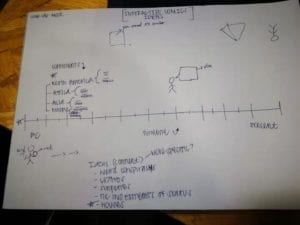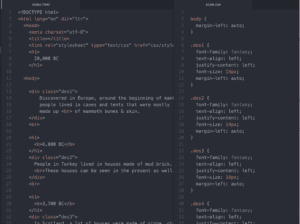Link: http://imanas.shanghai.nyu.edu/~yy2552/audio/
Description:
Anica and I agreed on basing our website around the popular idea of relaxing on a nice riverboat in Italy, and enjoying the sights as well as sounds of what one might be passing by. We also thought using our own comic person to help guide the user would be a cute and contrasting idea. I say contrasting because we knew that we were going to use images from the internet, yet we also wanted to embed the topic of the last project into ours, and create a cute imaginary, yet realistic experience for our viewers. Lastly, we included two buttons underneath our tour guide so that the user can have fun choosing which side of the river to be on.
Process:
Anica was in charge of the coding and visuals of the website, and I was in charge of drawing the cartoon character, finding the audios online, & editing them on Audacity. Throughout the process, we would often find times to meet to work on the project and make sure we were on track. We would then be our own “teachers” and assign individual work for what needs to be completed before the next time we meet. From previous experience, this way strongly encourages us to make time for the project and use the time given wisely.
I came up with the idea of using a comic person in this realistic-set theme, because I thought it would be fun not only trying to incorporate the theme of our comic project, but to make a contrasting setting. So, I drew a comic person sitting and relaxing on the Riverboat in Italy. Map in hand, and hat on head, this tour guide will happily help our users navigate through our website.
I also was in charge of finding the audios for each sound, and wanted it to be as realistic as possible. My inspiration to know which image and sound I wanted to incorporate stemmed from Youtube videos showing me the perspective of being on a riverboat in Italy. I looked at different videos and perspectives to give me a more accurate picture of what to look for. I then took each audio and turned it into my own mix. I edited all the audio and combined certain parts of different audio together, as well as amplifying the sound to make it more clear. I also made sure that the amplifying levels on each audio were the same or very similar.
In terms of teamwork, that was definitely a bit challenging for me. Teamwork is really an acquired skill, and I found myself frustrated at times because of the language barrier which led to continuous miscommunication between my partner and I.
I personally didn’t think some of our goals were met, like for example Anica and I kept running into this problem of not having similar visuals for the webpage, so we had to constantly go back and forth between fixing it and trying to clarify what the united vision is here. However, with both our hard work we eventually came to a similar goal with how the website is supposed to look like!
Audio Citation:
The source for the audios were found on https://www.zapsplat.com

